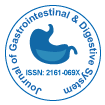开放获取期刊获得更多读者和引用
700 种期刊 和 15,000,000 名读者 每份期刊 获得 25,000 多名读者
索引于
- 哥白尼索引
- 谷歌学术
- 夏尔巴·罗密欧
- 打开 J 门
- Genamics 期刊搜索
- 中国知网(CNKI)
- 电子期刊图书馆
- 参考搜索
- 哈姆达大学
- 亚利桑那州EBSCO
- OCLC-世界猫
- SWB 在线目录
- 虚拟生物学图书馆 (vifabio)
- 普布隆斯
- 日内瓦医学教育与研究基金会
- 欧洲酒吧
- ICMJE
有用的链接
开放获取期刊
分享此页面
抽象的
A Hospital Based Cohort Study of Colorectal Cancer Cases Treated at Braga Hospital, Northern Portugal
Sandra F Martins, Ricardo Amorim, Rui M Reis, Céline Pinheiro, Mesquita Rodrigues, Fátima Baltazar and Adhemar Longatto Filho
Background: Colorectal cancer (CRC) is the third most common cancer and the fourth most frequent cause of cancer death worldwide. Nonetheless, despite being a frequent cancer on which many epidemiological international studies have already been written, Portuguese epidemiological data are scarce and in particular there are very few specific data for Minho Region, which is traditionally recognized as a high incidence area.
Aim: Characterize CRC patients treated at Braga Hospital.
Methods: Data regarding clinical and preoperative diagnostic examinations, operative reports and histopathological and follow-up data was collected prospectively and stored in two Excel PC databases (colon and rectal cancer) and statistically analysed using the Statistical Package for the Social Sciences, version 19.0 (SPSS Inc., Chicago, Illinois, USA). All comparisons were examined for statistical significance using Pearson’s chi-square (χ2) test and Fisher’s exact test (when n<5), with the threshold for significance P values <0.05. Overall survival and Survival free disease were both assessed using the Kaplan-Meier method.
Results: The study comprises 672 patients with histological diagnosis of CRC treated in Braga Hospital between 2005 and 2009. It included 62.3% males and 37.7% females and most patients (60.5%) were between 61-80 years old. 65.3% of the cases arose from colon cancer and 34.7% from rectal cancer. We observed that 94.8% of the patients had no previous history of colorectal polyps. 4.1% had a previous personal history of CRC and 7.7% of a different cancer. 9.7% had a positive CRC family history. Most patients (81.3%) were symptomatic at diagnosis, while 18.8% were detected by routine colonoscopies. Colon and rectal cancer from most patients was at IIA stage and IV stage respectively. Follow-up time ranged between 1 and 5 years and, during this period, 26.7% of colon cancer patients and 25.3% of rectal cancer patients died from a colorectal cancer-related cause; also, 14.6% and 19.3% respectively had recurrence, mainly in the liver.
Conclusion: This is the first study of a large cohort of CRC patients from the Minho Region in Northern Portugal. The large majority of the 672 cases were diagnosed because symptomatic and at an advanced stage, with a relatively poor prognosis. These findings emphasize the need to start a screening program and diagnose CRC at an early stage, thus increasing cure rates and improving resource management.

 English
English  Spanish
Spanish  Russian
Russian  German
German  French
French  Japanese
Japanese  Portuguese
Portuguese  Hindi
Hindi